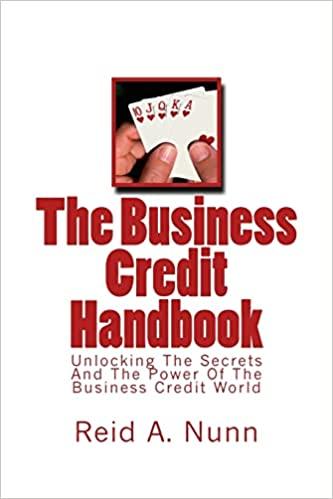Question
Sula Vineyards Case Study: 11. Assess Sula Vineyards financial performance over the last five years (2003-2007) using common size statement analysis and financial ratios and
Sula Vineyards Case Study: 11. Assess Sula Vineyards financial performance over the last five years (2003-2007) using common size statement analysis and financial ratios and the data provided in Exhibits 57 (Exhibits 5 and 6 are provided in excel as a starting point). What conclusions can be drawn with respect to the companys operating and financial performance over this period? As part of your analysis, include a discussion of changes in Sulas cash conversion cycle and what was driving the changes. Also include a calculation and discussion of the companys sustainable growth rate based on 2007 data. 12. Evaluate scenario C presented in exhibits 11 16 (Exhibit 13 is provided in excel as a starting point). Create a pro forma income statement and balance sheet for Scenario C for 2008-2012 based on data from case exhibits 5-14. If external financing is needed, use the category Additional Funds Needed (AFN) on the projected balance sheet as your plug figure. If excess funds are generated, created a short-term asset called Short Term Investment in order to balance the balance sheets. What conclusions can you draw from your analysis? 13. Calculate the free cash flow for Sula Vineyards for 2003-2007 and for projections based on Scenario C using the projected financial statements you prepared in question 12 above. Dont be surprised if some or all cash flows are negative. When looking at Exhibit 13 in the Sula Vineyards Case, assume that the percentages shown for Property, Plant and Equipment (P, P & E) are gross PP&E as a percentage of revenue. Please ignor the comment in the middle of the page that indicates the PP&E percentages are not percentages of revenue (they have to be). The case writer may have been trying to say these are gross PP&E percentages of revenue instead of net PP&E percentages of revenue, but at best, there must a few words omitted. In any case, please disregard the Property Plant and Equipment comment in the middle of Exhibit 13 and assume the data shown is gross PP&E as a percentage of revenue. 14. Value the company for Scenario C using discounted cash flow techniques and multiples analysis. Use a discount rate based on WACC, assuming Sulas before tax cost of debt is 7% and their beta is 1.0. Exh 13 - Scenario C ($K) % 2008 2009 2010 2011 2012 Revenue (To be estimated by you) Cost of Goods Sold Purchases 20.0% Manufacturing and Operating Expenses 18.0% Direct labor 7.6% Total Cost of Goods Sold $0 $0 $0 $0 $0 Gross Margin Administrative Expenses 7.6% Selling and Marketing Expenses 20.0% Sales Taxes 8.3% Total Expenses $0 $0 $0 $0 $0 EBITDA Depreciation EBIT Interest and Finance Costs PBT Provision for Taxes (10%) Net Income 2008 2009 2010 2011 2012 Assets: Current Assets: Cash 2.6% Accounts Receivable 24.0% Inventories 83.0% Loans and Advances 7.6% Total Current Assets Fixed Assets: Property Plant and Equipment 59.0% (Based on weighted avg asset life, straight-line in years) 11 Years Less: Accumulated Depre & Amortiz. Net Property Plant and Equipment Other Assets 0.9% Total Assets Liabilities and Equity: Current Liabilities: Accounts Payable 4.1% Other Liabilities 1.4% Notes Payable (Bank) Accrued Expenses 4.4% Total Current Liabilities Secured Loans (Net)- % of PPE 95.0% Deferred Tax Liability (Net) Total Long Term Commitments Equity Share Capital Capital Surplus Retained Earnings Total Equity Total Liabilities and Equity Exh 5 ($K) Exh 6 ($K) 2003 2004 2005 2006 2007 2003 2004 2005 2006 2007 Revenue $1,026 $2,297 $3,761 $4,946 $6,867 Assets: Current Assets: Cost of Goods Sold Purchases $204 $478 $752 $1,037 $1,456 Cash $51 $77 $114 $142 $183 Manufacturing and Operating Expenses $227 $488 $786 $1,034 $1,380 Accounts Receivable $196 $463 $788 $1,091 $1,455 Direct labor $94 $203 $317 $404 $542 Inventories $728 $1,817 $2,835 $4,105 $5,771 Total Cost of Goods Sold $525 $1,169 $1,855 $2,475 $3,378 Loans and Advances $97 $201 $323 $407 $545 Total Current Assets $1,072 $2,558 $4,060 $5,745 $7,954 Gross Margin $501 $1,128 $1,906 $2,471 $3,489 Fixed Assets: Administrative Expenses $117 $277 $421 $583 $728 Property Plant and Equipment $863 $1,542 $1,877 $3,386 $4,253 Selling and Marketing Expenses $204 $498 $806 $1,088 $1,511 Less: Accumulated Depre & Amortiz. $79 $131 $196 $277 $408 Sales Taxes $78 $192 $305 $414 $563 Net Property Plant and Equipment $784 $1,411 $1,681 $3,109 $3,845 Total Expenses $399 $967 $1,532 $2,085 $2,802 Other Assets 11 21 38 51 63 EBITDA $102 $161 $374 $386 $687 Total Assets $1,867 $3,990 $5,779 $8,905 $11,862 Depreciation $33 $52 $65 $81 $131 Liabilities and Equity: EBIT $69 $109 $309 $305 $556 Current Liabilities: Accounts Payable $42 $93 $152 $192 $282 Interest and Finance Costs $78 $193 $294 $270 $340 Other Liabilities $12 $32 $46 $63 $96 Notes Payable (Bank) $838 $1,721 $2,563 $2,660 $4,011 PBT -$9 -$84 $15 $35 $216 Accrued Expenses $45 $98 $157 $196 $288 Total Current Liabilities $937 $1,944 $2,918 $3,111 $4,677 Provision for Taxes (10%) $0 $0 $1 $3 $21 Secured Loans (Net) $900 $2,100 $2,900 $2,300 $3,500 Net Income -$9 -$84 $14 $32 $195 Deferred Tax Liability (Net) $0 $0 $2 $3 $0 Total Long Term Commitments $900 $2,100 $2,902 $2,303 $3,500 Equity: Share Capital $200 $200 $200 $300 $300 Capital Surplus $400 $400 $400 $3,800 $3,800 Retained Earnings -$570 -$654 -$641 -$609 -$415 Total Equity $30 -$54 -$41 $3,491 $3,685 Total Liabilities and Equity $1,867 $3,990 $5,779 $8,905 $11,862
Step by Step Solution
There are 3 Steps involved in it
Step: 1

Get Instant Access to Expert-Tailored Solutions
See step-by-step solutions with expert insights and AI powered tools for academic success
Step: 2

Step: 3

Ace Your Homework with AI
Get the answers you need in no time with our AI-driven, step-by-step assistance
Get Started


